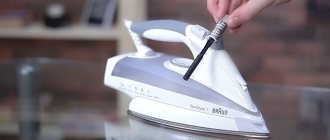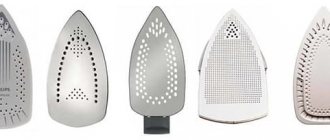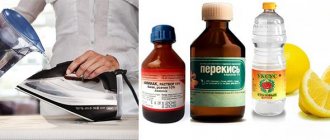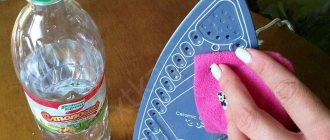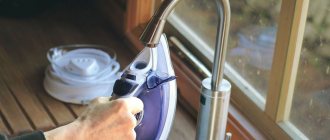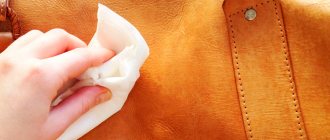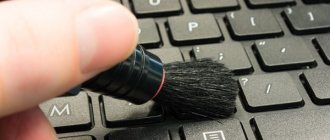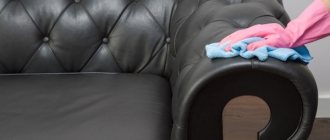Even such a simple job as ironing requires close attention from a person. The result of being distracted from the process for just a couple of minutes is the appearance of a black spot of burnt fabric on the sole of the iron, and such a nuisance can happen with both a regular steel appliance and a device with a non-stick coating.
Coating features
Teflon is a white or transparent (when applied in a thin layer) substance that has significant frost and heat resistance and strength. The material is also resistant to chemicals and acids.
Advantages and features of irons with Teflon-coated soles:
- ease of sliding of the device over the fabric, high quality ironing;
- the ability to iron delicate materials that are sensitive to high temperatures without the risk of damaging the item.
IMPORTANT! The disadvantage of the Teflon surface is the low resistance of the material to scratches, therefore, when using a household appliance, you should strictly follow the operating rules of the device.
Is your iron coated with Teflon?
Not really
Simple ironing rules
Prevention is easier than cure, so following proper ironing rules will help prevent the problem from recurring in the future.
- Follow the instructions on the clothing label. On any item it is written what material it is made of and at what temperature it can be ironed. Strict adherence will eliminate the possibility of burning.
- An item that wrinkles easily and has a low temperature threshold can be ironed through damp gauze. This will speed up the removal of wrinkles and reduce contact with clothing.
Maintenance of the iron should be timely, then carbon deposits will be easy to remove.
Source
Causes of burning
Some of the most common reasons for the formation of carbon stains on Teflon soles are:
- incorrect choice of temperature conditions - ironing items made from delicate fabrics with an electrical appliance that is too hot;
- ironing adhesive materials;
- holding a hot device on the fabric for a long time.
If, while working, you accidentally iron any metal elements of clothing (zipper, rivet, buttons), scratches will remain on the Teflon coating, which, in turn, will impair the sliding of the device on the surface and will contribute to the formation of carbon deposits.
Filling the steam reservoir with unpurified water also leads to gradual contamination of the internal parts of the household appliance and the appearance of scale on its base.
Why does soot form?
The iron with a Teflon polymer sole is certainly durable and wear-resistant. But these qualities are not able to completely protect against scratches, on which a black soot stain forms over time.
The device can be damaged or damaged under the following circumstances:
- contact of a hot surface with metal jewelry, locks, buttons;
- keeping the sole in one place for a long time;
- choosing the wrong mode for ironing synthetic fabric;
- setting a high temperature when working with materials that are highly adhesive;
- using unfiltered water to supply steam.
If you were unable to protect the surface of the iron from contamination, do not be discouraged. You can restore cleanliness and shine with the help of simple devices and accessible recipes.
How to clean a Teflon-coated device?
The Teflon surface requires careful handling during operation of the iron; caring for such a coating also has its own characteristics and involves the use of products without abrasive components to clean the device.
IMPORTANT! It is prohibited to wash the soleplate with hard sponges or scrape it with a knife, trying to remove limescale or burnt fabric, as you will damage the polymer layer and the iron will become unusable.
Despite many restrictions in the choice of product care products, there are a considerable number of special chemicals and traditional methods for cleaning electrical appliances.
Using the Cleaning Pen
The product can be purchased at any household chemical store . Using this pencil is quite simple.
Most products contain organic acids and urea, which, when interacting with a hot surface, melt and dissolve limescale or carbon deposits.
Cleaning procedure:
- place the iron vertically, turn it on, setting the heating temperature to 120-140 ⁰C;
- Turn off the power, take a pencil, press it against the hot sole and apply the product over the entire surface using circular movements.
ATTENTION! The molten substance should not get into the steam outlet holes, so during operation, do not keep the product in one place for a long time, so as not to form sagging, which subsequently flows into the channels.
Using citric acid
Thanks to this method, you can quickly clean the ironing part from deposits of hardness salts, get rid of carbon deposits on the sole itself and in the steam release holes:
- pour 1 teaspoon of citric acid into 200 ml of water (purified), stir the components until the crystals are completely dissolved;
- Fill the iron liquid container halfway with the resulting solution;
- turn on the device, set the maximum temperature;
- when the device heats up, turn it off;
- Hold the iron horizontally over a basin or sink and press the steam release button. After 10 seconds, turn off the steam mode.
- repeat the procedure until all the acidic solution in the tank is used up.
- Wipe the soleplate of the iron with a soft, clean cloth.
- refill the tank with purified water, turn on the device and iron any unnecessary, old item or fabric.
Find out right now how to descale your iron using citric acid!
IMPORTANT! If after carrying out the procedure you notice that there is a residue left on the ironing element of the equipment, or when steam is released, particles of rust and lime deposits come out of the holes, repeat cleaning the device.
Using Vinegar
A wonderful way to remove salt deposits and burnt tissue from the ironing surface of a household appliance is ordinary table vinegar:
- make a solution of vinegar and filtered water, taken in a ratio of 1:2, respectively;
- soak a piece of soft, natural fabric (linen or cotton) in the resulting liquid;
- turn on the iron, set the minimum heating temperature (the soleplate should be hot, but not hot);
- turn off the power to the electrical appliance, spread a cloth moistened with vinegar and place the device on it in a horizontal position;
- After 20-30 minutes, place the device vertically, wipe the sole with a damp cloth or sponge and do a test ironing.
REFERENCE! If there is a need to clean the steam outlets, before placing the iron on a wet cloth, place cotton wool pads soaked in an aqueous solution of vinegar into the channels. After the procedure, remove the cotton wool and remove any remaining dirt using cotton swabs.
Note: Vinegar is great for cleaning grease from the microwave.
For particularly “grimy” devices, there is the following method for removing carbon deposits and deposits:
- prepare a heat-resistant container with a wide bottom (for example, a baking sheet);
- place two wooden slats parallel to the bottom of the dish (these can be sushi chopsticks or ordinary pencils) at such a distance from each other that the sole of the iron can be placed on them;
- install the device disconnected from the power supply on the rails;
- make a solution from a glass of vinegar and 1 liter of water;
- carefully pour the solution into a baking tray with an iron so that the sole is completely covered with liquid, but the acid does not come into contact with the plastic parts of the body;
- After 40-60 minutes, remove the device from the baking sheet, wipe the ironing element with clean water, and dry the device.
ATTENTION! If the device is significantly dirty, place the baking tray with the device placed in it on low heat, wait until the solution boils, after half an hour turn off the stove and wipe the base with a sponge soaked in water.
Hydrogen peroxide or nail polish remover
Acetone (nail polish remover) and 3% hydrogen peroxide will help remove fibers burnt to the iron.
To clean the sole with acetone, do the following:
- unplug the iron and let it cool;
- saturate a cotton pad with the product and apply it to the stain;
- After 3 minutes, clean the device from carbon deposits with the same cotton pad.
In a similar way, you can remove dirt with hydrogen peroxide - this drug dissolves plaque well and makes it easier to remove.
Using toiletries
Liquid toilet soap and shower gel are also mild cleaning agents for the Teflon coating of the ironing part of a household appliance:
- heat the iron slightly, unplug it;
- apply a little liquid detergent to the sponge and treat the sole of the device with it;
- After 40 minutes, wipe the surface several times with a cloth dampened in clean water, then dry with a soft towel or cloth.
Laundry soap
- chop 1/3 of the bar on a fine grater;
- turn on the iron, set the maximum temperature;
- after turning off the device, apply soap to the entire surface of the sole;
- when the iron has completely cooled down, remove the melted shavings along with particles of dirt using a damp sponge;
- Wipe the device with a damp cloth and dry it.
Special blades
This method is based on mechanical removal of carbon deposits from the Teflon coating. Since it is strictly forbidden to clean the sole of such an iron with metal objects, you can remove the layer of burnt material from the ironing element using a special Teflon plate or spatula:
- warm up the device as much as possible;
- apply a spatula to the contaminated surface and remove burnt fibers from it;
- particles of molten fabric will easily peel off from the hot surface, settling on a cooler blade.
IMPORTANT! During operation, make sure that the Teflon device does not heat up too much, since in this case the carbon deposits will not be cleaned from the sole, but will be spread over it.
Toothpaste
A hygienic product used to remove plaque can be successfully used for the same purposes for all kinds of household appliances, including Teflon irons:
- turn on the device, set the lowest heating temperature;
- Apply the paste to a soft sponge and rub it into the warm sole;
- After 5 minutes, treat the iron part with a damp cloth, turn it on again and iron the unnecessary item.
IMPORTANT! Be careful - the abrasiveness index of toothpaste should not exceed 80 units. Otherwise, you may scratch the Teflon coating.
Tidying up the ceramic sole
Devices with ceramic soles are the most reliable and durable. Such irons are able to smooth out any wrinkles and can retain heat for a long time. But even with a self-cleaning function, the products still get dirty.
You can clean the ceramic platform with a solution of ammonia and lemon juice. To do this, flannel fabric is soaked in the prepared liquid and the working part of the iron is wiped with it. You can also use hydrogen peroxide, which will remove scale and yellowness.
A product for glass ceramics is also suitable, but it is expensive. It is applied to the cold soleplate of the iron, then wiped with a sponge. The burnt fabric is scraped off with a wooden spatula. To do this, the iron is heated, and at the end of the process, the rough type of material is ironed.
A hydroperite tablet will help clean ceramic deposits. You can find out how to work with it above.
Is it possible to restore a damaged surface?
Even if the iron is used correctly, over time the surface of the sole wears out and becomes covered with small scratches.
You can reduce the roughness of the Teflon ironing element in the following way:
- cut a small piece from the paraffin candle and grind it on a grater;
- mix the shavings with a pinch of finely ground salt, place the mixture on a piece of cloth and spread it in an even layer;
- place a piece of thin cloth (or paper napkin) on the mixture;
- heat the iron and iron the material several times;
- turn off the device and clean the soleplate with a dry cloth.
After the procedure, the scratches should become invisible and the sole should be smooth.
ATTENTION! If the method using a candle and salt did not help improve the condition of the Teflon, the non-stick layer can be restored by contacting a service center.
Old and difficult stains
It is easiest to clean a non-stick soleplate as soon as the problem occurs. It is better not to use a “dirty” device, because traces of soot may remain on things. If you don’t have the opportunity or desire to use a special pencil, you can use regular salt. There are three cleaning methods:
- You need to sprinkle fine salt on the surface of a sheet of white paper and iron it until the traces of burnt material completely disappear.
- You need to wrap 3 tablespoons in gauze, folded in half. You will get a bag with which you can polish the contaminated surface.
- It is necessary to sprinkle the problem area with salt and rub it in with a damp cloth. Cleaning is done cold.
Adviсe
- set the heating temperature of the iron in accordance with the recommendations of the manufacturers of items, which are indicated on the tags or tags;
- always iron items made of silk and other delicate fabrics through moistened gauze, woolen and wool blends through cotton material;
- Only fill the iron reservoir with filtered liquid. Hard water will lead to the formation of mineral deposits on the internal and external parts of the device, which in turn will worsen the sliding properties of the sole and can also contribute to the burning of the fabric being ironed;
- a knife, cleaning abrasive powder, or a metal brush will, of course, do an excellent job of removing carbon deposits from the device, but at the same time they will remove or scratch the non-stick coating along with the contamination.
By adhering to the above tips and rules during ironing, you can prevent the formation of plaque on the sole of the iron and eliminate the need for tedious procedures for cleaning the part from the burnt part.
If a carbon stain does appear on the ironing element, use special preparations or improvised means to remove it.
How to clean rust from an iron?
Rust remover
Typically, rust on an iron is caused by regular use of untreated tap water. Therefore, if you want to avoid such problems, then fill the steam tank exclusively with distilled water.
Some housewives don’t bother and get rid of this problem with a regular powdered cleaner or even fine sandpaper.
But if you, for example, have a Teflon or ceramic iron, then these methods can quite scratch the soleplate of the device. If the layer of rust is large enough and can no longer be washed off with soapy water, then try removing it with a special Silit product.
So: • Preheat the iron. • Apply Silite to the sole of the device. • Thoroughly scrub the stained areas with a sponge or old toothbrush. • Wash away any remaining rust with a damp cloth.
